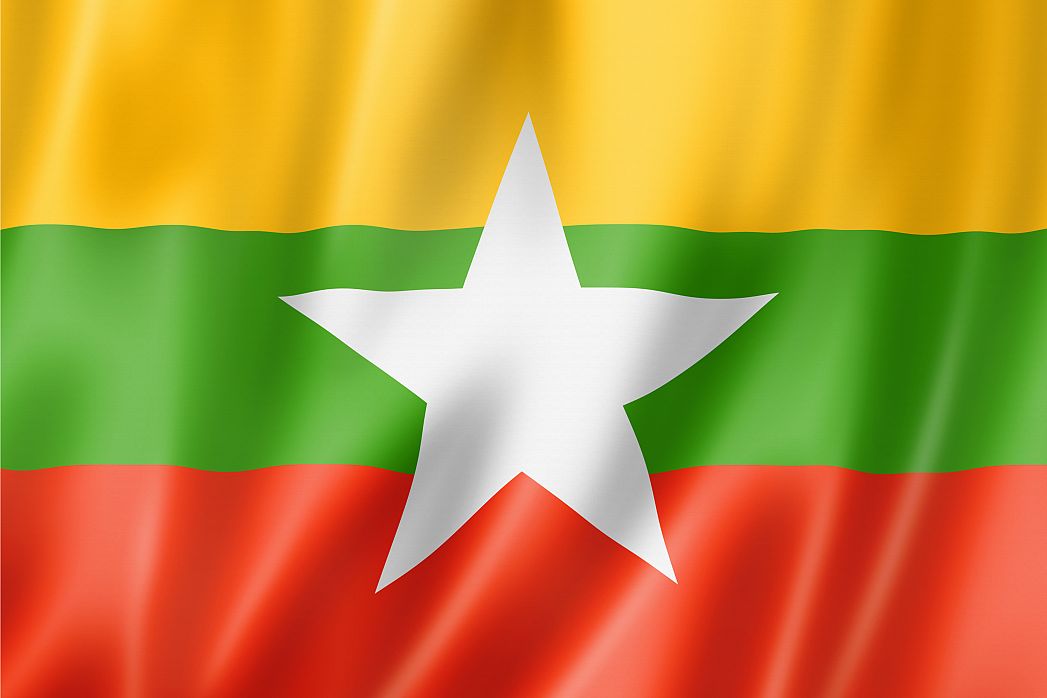The flag of Myanmar consists of three equally sized horizontal stripes of yellow, green, and red with a white, five-pointed star in the center. The flag was officially adopted on 21 October 2010 after the 2008 Constitution of Myanmar laid the foundations for the transition to a democratic republic. This national symbol replaced the Civil Ensign of Burma which has been in use since 1952.
Within the flag of Myanmar, green is representative of peace, the dense forestry in Myanmar, and tranquillity. The red is a symbol of the courage and determined spirit of the people of Myanmar and the yellow is a symbol of solidarity between these citizens of the country. The white, five-pointed star represents unity among ethnic groups in Myanmar. This flag shares similar characteristics to many African flags and can sometimes be confused with the flags of other nations.
The design was included in the 2008 Constitution of Myanmar although new designs for a national flag had been openly proposed in the 2006 national constitutional conventions. The specific design specifications are enshrined in the State Flag Law. It is unknown who the original designer of the flag was but the symbol is not seen as a positive unification tool by everyone in the nation.
There are several historical flags associated with the country. The flag of British India, of which Myanmar was a part of, flew from 1824-1937 and then two separate flags of British Burma were used from 1939-1941, 1941-42, and 1945-48. The flag of Japan was the provisional flag of the country during the occupation of World War II. Two versions of the Civil Ensign of the Union of Burma were used from 1952-1974 and 1974-2010 until the current flag was adopted.
This page was last modified on May 1st, 2018
More on Graphicmaps

Published on 2019-11-06
What is a Trade Embargo?

Published on 2019-11-04
Which Two Countries Used to Have the Same Flag?

Published on 2019-09-16
What Is the Only Two-Sided State Flag?

Published on 2019-09-16
Which Country Flag Looks Like the Texas Flag?

Published on 2019-08-29
Flags That Resemble the US Flag

Published on 2019-08-20
